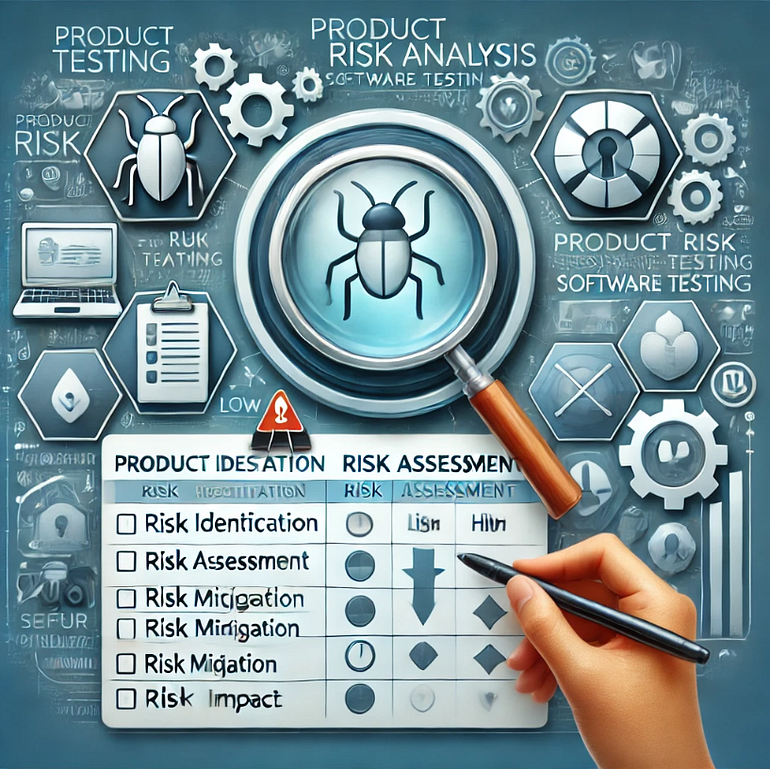Product Risk Analysis
Introduction
Product risk analysis is a crucial process in software testing that helps teams identify, assess, and mitigate risks that may impact the quality of a product. The goal is to focus testing efforts in a way that minimizes residual product risk and ensures a stable, high-quality software product. Ideally, product risk analysis should begin early in the Software Development Life Cycle (SDLC) to maximize its effectiveness.

Key Aspects of Product Risk Analysis
Product risk analysis consists of two main activities:
1. Risk Identification
Risk identification is the process of generating a comprehensive list of potential risks. Various techniques and tools can be used, such as:
- Brainstorming sessions with key stakeholders
- Workshops focused on potential software vulnerabilities
- Interviews with developers, testers, and product owners
- Cause-effect diagrams to trace possible risk origins
2. Risk Assessment
Once risks are identified, they are assessed to determine their severity. Risk assessment includes:
- Categorization of identified risks to group similar risks
- Determining risk likelihood (probability of occurrence)
- Assessing risk impact (consequences of occurrence)
- Calculating risk level based on likelihood and impact
- Prioritizing risks to focus testing on the most critical areas
- Proposing mitigation strategies to minimize risk impact
Approaches to Risk Assessment
Risk assessment can be conducted using either a quantitative or qualitative approach, or a combination of both.
Quantitative Approach
- Uses numerical values to calculate risk levels.
- Risk level = Risk Likelihood × Risk Impact.
- Helps provide a data-driven risk prioritization framework.
Qualitative Approach
- Uses a risk matrix to categorize risks as Low, Medium, or High.
- Risk levels are determined based on discussions and expert judgments.
- Provides a flexible approach that works well in agile environments.
How Product Risk Analysis Influences Testing
The results of product risk analysis help define various testing aspects, such as:
- Determining Testing Scope — Identifying which features or functionalities require the most testing effort.
- Selecting Test Levels and Test Types — Defining whether unit, integration, system, or acceptance testing is necessary.
- Choosing Test Techniques and Coverage Goals — Deciding whether to use exploratory, boundary-value, or risk-based testing.
- Estimating Test Effort — Allocating resources efficiently based on risk levels.
- Prioritizing Test Execution — Ensuring high-risk areas are tested first to detect critical defects early.
- Identifying Additional Risk Mitigation Activities — Considering non-testing solutions such as process improvements or security audits.
Conclusion
Product risk analysis plays a vital role in enhancing software quality by identifying and addressing potential issues early in the development process. By applying systematic risk identification, assessment, and mitigation strategies, teams can optimize testing efforts and deliver reliable software solutions.
By integrating risk-based testing approaches, organizations can minimize unexpected failures, improve user satisfaction, and maintain a competitive edge in the industry.